
A Ziggurat is a form of monumental architecture originating in ancient Mesopotamia which usually had a rectangular base and was built in a series of steps up to a flat platform upon which a temple was raised. The ziggurat was an artificial mountain raised for the worship of the gods to elevate the priests toward heaven.
The people of the Ubaid Period (c. 5000-4100 BCE) are thought to have come down from the mountains to the plains of Mesopotamia and influenced the Sumerians (or were Sumerians), the first to build ziggurats as religious sites mirroring sacred high places. This is speculative, of course, but suggested by Sumerian names of some ziggurats which reference mountains. The structure was known as unir in Sumerian and as ziggurratum (or ziggurartu) in Akkadian, both meaning "peak," "pinnacle," or "high place," and served as a platform on which priests would perform rituals in view of the people far below.
During the Sumerian Uruk Period (4100-2900 BCE) ziggurats were raised in every city in honor of that community's patron deity. The ziggurat/temple was not a public house of worship, but the earthly home of the god of the city, who was attended by the high priest and lesser priests of the temple complex. Ziggurat construction continued through the Early Dynastic Period of Mesopotamia (2900-2334 BCE) and was then adopted by the later Akkadian, Babylonian, and other civilizations of the region.
The most famous ziggurat in history is the Tower of Babel – associated with the great ziggurat of Babylon known as Etemenanki – "the foundation of heaven and earth" – made famous from the story in the Bible (Genesis 11:1-9). The best-preserved ziggurat extant is the Ziggurat of Ur begun under the reign of Ur-Nammu (2047-2030 BCE) and completed under the reign of his son and successor Shulgi of Ur (2029-1982 BCE).
The second-best preserved is Chogha Zanbil, built during the reign of the Elamite king Untash-Napirisha (r. c. 1275-1240 BCE) and dated to c. 1250 BCE, located in the modern-day province of Khuzestan, Iran. Many poorly preserved ziggurats exist throughout the Near East, and many more have been lost due to the repurposing of the materials. Ziggurats were in use from c. 3000 BCE to c. 500 BCE when Persian Zoroastrianism changed the religious paradigm in the region. Interestingly, the same sort of structure was raised by civilizations in the Americas who never had any contact with Mesopotamia.
Purpose & Construction
As noted, the ziggurat's purpose was to elevate the primary servant of the god (a high priest, usually, for a male deity and high priestess for a goddess) to a point between earth and the heavens. The gods were understood to live high above, and so, to confer with them clearly, one needed to draw as close to their realm as possible. Once this was accomplished, the deity was thought to spend time on earth residing in his or her statue inside the temple at the top of the ziggurat.
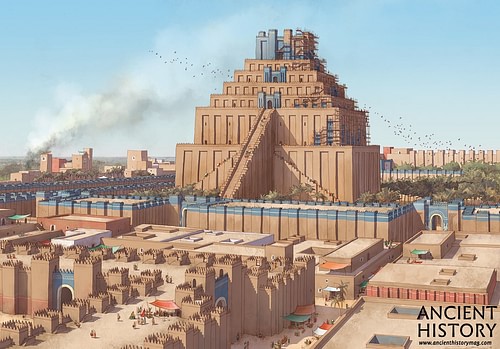
Herodotus (l. c. 484-425/413 BCE) discusses this purpose of the ziggurat, claiming that the god Marduk of Babylon (referred to by Herodotus as Zeus) was believed to come down to the temple at the top of the city's ziggurat to sleep with a woman who lived there. No statue of Marduk was kept in the temple, only the woman (Histories, I:181-182). This custom, as Herodotus suggests, was in keeping with the belief that the god would have sexual intercourse with a chosen woman to ensure the fertility of the land. It is also possible, as scholar Stephen Bertman points out, that the ziggurat served the purpose of safety and preservation:
In a land ravaged by flood, the ziggurat was merely a monumental means to raise up a shrine and protect it from water damage. (197)
The structure may also have served as an observatory, a claim made by the historian Diodorus Siculus (l. 90-30 BCE), who notes how Babylonian astronomers used the ziggurat to make "their observations of the stars, whose risings and settings could be accurately observed by reason of the height of the structure" (Histories, 2:9; Bertman, 196). Bertman observes that the ziggurat could have been used for all of these purposes, and no single reason given for the structures rules out any of the others.
The ziggurat was built of sun-dried mud bricks from the center outward with no internal chambers. The structure was then faced with kiln-baked brick, ornamented, and painted. It rose from the temple complex courtyard, a large space for religious gatherings, with buildings around the perimeter including a sanctuary, housing for priests, a school for scribes, a kitchen and dining hall, and administrative offices all enclosed by a mud brick wall. Administrative priests would have supervised the daily operation of the complex, educational initiatives, dispensing surplus food to the people, and providing medical assistance.
The ziggurat itself was not a place of public worship and neither was the temple in ancient Mesopotamia. The temple was the home of the deity, and the height of the ziggurat simply made it easier for that god or goddess to visit. People would come to the courtyard for religious services to watch the high priest make offerings to the god on the ziggurat or enter into the temple at the top to receive important messages.
Kings & Priests
In the Uruk Period, the high priest was also the ruler of the city whose authority came directly from the patron god that watched over it. Scholar Marc van de Mieroop writes:
At the top of the Uruk society stood a man whose powers derived from his role in the temple. Hence, scholars often call him a "priest-king." At the bottom of the social ladder of the temple dependents were the people involved in production, both agricultural and otherwise. (27)
The temple dependents (known as sirkus) were neither free nor slaves but were attached to the complex as workers in various capacities. Initially, the high priest oversaw the operation of the temple as well as administrative duties in the city, but in time, this seems to have become too taxing for a single individual and his assistants, requiring the creation of a secular leader: the king.
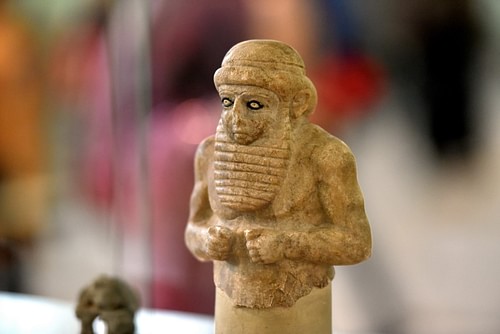
The position of the king developed from the concept of the lugal ("strong man"), the head of a clan or tribe who had proven himself an effective warrior and leader. After the creation of kingship, the high priest could devote himself completely to the service of the god while the king, whose authority was established through military conquest, plentiful harvests, and care of the people, could deal with the day-to-day administration of the city. Bertman comments:
The [priest] would have thus been the local god's representative on earth, managing the temple lands and the people who worked them…a second office, that of [king] or "governor" arose whose duty it became to manage civic affairs (law and order, commerce and trade, and military matters) while the [priest] continued to manage the business of the temple. (65)
This division of responsibility seems to have worked well in that, except for some notable instances – such as the Assyrian king Sennacherib (r. 705-681 BCE) rejecting the traditions of the priests of Babylon – the monarchy and priesthood worked together harmoniously. The king's victories in battle, conquest, and the prosperity of the city all served as proof that the god was pleased with him, and as long as the ruler's string of successes continued, he was supported by the priests. The palace and temple complex, therefore, worked together seamlessly as civil and spiritual authorities which informed Mesopotamian government.
The ziggurat, built at the center of the city, symbolically and practically served as the community's heart while the palace, which may or may not have been located nearby, was its head. The kingship was established by c. 3600 BCE, and by the time of the first phase of the Early Dynastic Period, it (Dynastic I, 2900-2800 BCE) was an integral aspect of every urban community. As the dynamic of rule changed from the Uruk Period to later eras, the ziggurat remained more or less the same in shape and overall purpose but grew taller, longer, and wider to reflect the grandeur of the city and the successful reign of its king.
Sumerian Ziggurats of Uruk & Ur
The two best examples of this are the ziggurats of Uruk and Ur built, respectively, c. 3000 BCE and between 2047-1982 BCE. The Uruk ziggurat rose 40 feet (12 m) above the surrounding plains and was topped by a shrine known as the White Temple, measuring 55x72 feet (17x22 m) reached by processional stairs on the side of the structure. A stone building was erected just below the ziggurat whose purpose is unknown but is of special interest in that Mesopotamians built out of mud brick, not stone.
The Uruk Ziggurat was built of rammed earth and sun-dried mud brick with the top surface covered in bitumen and then more brick, providing waterproofing and a secure foundation for the White Temple. The temple was oriented to the cardinal points, made of mud brick, and painted a bright white. Reconstructions suggest the structure, built to honor the sky god Anu, was impressive but simple. By the time the ziggurat of Ur was built, this paradigm had shifted to a more complex vision.
The ziggurat of Ur was dedicated to Nanna (also known as Sin), the moon god and patron deity of Ur. Ur-Nammu, who had defeated the Gutians early in his reign and wanted to present himself to his people as a protective father figure, commissioned the ziggurat as a grand celebration of his reign; it was completed by his son Shulgi. The ziggurat was built of sun-dried mud brick with a central staircase from the ground to the upper level and two matching sets of stairs running down the façade to left and right. One would proceed up the central set of stairs, go under an arch, and then step up to a second level and then into the temple on a raised third level.
The ziggurat of Ur was found in ruin by Nabonidus of Babylon (r. 556-539 BCE, sometimes referred to as the "first archaeologist"), who tried to restore it. The upper level of the site in the modern day is primarily the work of Nabonidus while other restoration efforts come from the modern era, initiated by President Saddam Hussein in the 1980s. Although both of these ziggurats would have been visible from far off, serving as landmarks to travelers, the tallest, largest, and best known is the ziggurat from Babylon (built c. 14th-9th century BCE) known from the Bible as the Tower of Babel.
Tower of Babel
Herodotus describes the ziggurat of Babylon as immense. The royal palace was in one district, the ziggurat (which he identifies as dedicated to Zeus but was in honor of Marduk) dominated the other:
In the center of one of the two districts of the city stands the royal palace, surrounded by a tall, strong wall, and in the center of the other there is a bronze-gated sanctuary to Zeus-as-Bel, standing in my day and forming a square with each side two stades long. In the middle of the sanctuary has been built a solid tower, a stade long and the same in width, which supports another tower, which in turn supports another, and so on: there are eight towers in all. A stairway has been constructed to wind its way up the outside of all the towers; halfway up the stairway there is a shelter with benches to rest on where people making the ascent can sit and catch their breath. In the last tower there is a huge temple. (I.181)
Modern-day estimates give the height of the structure at 177 feet (54 m), but this is speculative as the ziggurat of Babylon lay in complete ruin at the time of the death of Alexander the Great in 323 BCE. The ziggurat has come to be associated with the Tower of Babel from Genesis 11:1-9, which tells the story of the people of the city building a tower to reach the heavens, at a time in the world where everyone spoke the same language, to make a name for themselves and be remembered. God finds this displeasing, reasoning that, if they are allowed to build to heaven, there will be no stopping any future plans they might have. He decrees there will be many different languages and the people, unable to understand each other, abandon the project.
The biblical tale never identifies the city as Babylon, only that the tower is built "upon a plain in the land of Shinar," which has been understood to mean Sumer. The term 'Tower of Babel' also never occurs in the Bible as the site God visits is only called "the city" or "the city and the tower." Still, the association has stuck, and scholars have suggested various theories as to how the Etemenanki of Babylon became the Tower of Babel. These theories often focus on etymology and a misinterpretation of the Akkadian word for "Gate of the God" (bav-il or bav-ilim, which became Babylon) with the Hebrew word bavel for "confusion." Scholar Samuel Noah Kramer offers another explanation:
The story of the building of the Tower of Babel originated, no doubt, in an effort to explain the existence of the Mesopotamian ziggurats. To the Hebrews, these towering structures, which could often be seen in a state of ruin and decay, became symbols of man’s feeling of insecurity and the not unrelated lust for power which brings upon him humiliation and suffering. It is most unlikely, therefore, that a parallel to this story will be found among the Sumerians, to whom the ziggurat represented a bond between heaven and earth, between god and man. On the other hand, the idea that there was a time when all peoples of the earth "had one language and the same words" and that this happy state was brought to an end by an irate deity may have a parallel in a golden-age passage which is a part of the Sumerian epic tale "Enmerkar and the Lord of Aratta". (293-294)
An "irate deity" may have stopped the progress of the Tower of Babel, but the ziggurat of Babylon met with a different fate. After it was destroyed by Sennacherib in 689 BCE, it was rebuilt by successive kings up through Nebuchadnezzar II (r. 605/604-562 BCE) and then fell into disrepair. In 323 BCE, Alexander the Great ordered the ruins cleared to build a new ziggurat but died soon after and plans for restoring Babylon were abandoned by his successors. Materials from the ziggurat were then removed by locals and repurposed.
Conclusion
The many other ziggurats throughout Mesopotamia and neighboring regions met the same fate after c. 500 BCE when the Persian concept of an all-powerful, omnipresent deity – Ahura Mazda – made the ziggurat obsolete. Worship and offerings, still made by priests of Zoroastrianism, now took on a new form. Sites such as the Sialk ziggurat at Tepe Sialk, Iran (c. 3000 BCE), the Kassite ziggurat of Dur-Kurigalzu near Baghdad, Iraq, (14th century BCE), and the grand structure of Chogha Zanbil in Khuzestan, Iran were abandoned – not all necessarily for religious reasons – and fell into ruin.
Although the ziggurats of Mesopotamia are often compared with the pyramids of Egypt, and arguments regarding which came first continue, the Mesopotamian structures probably have nothing to do with Egyptian architecture and certainly nothing to do with the Egyptian pyramid's meaning or purpose. There is no evidence that the Egyptian step pyramid design was influenced by the ziggurat, although that certainly is a possibility, but scholarly consensus defines the pyramids as monuments to the dead and their journey to the afterlife, while ziggurats were raised to the living gods of Mesopotamia.
A far more interesting aspect of the ziggurat, than whether the design did or did not influence Egypt, is how the same basic concept appears in civilizations that had no contact with Mesopotamia, such as the Maya, the Aztec civilization, and the indigenous people of North America, among others. Watson Brake in modern-day Louisiana, USA, dated to c. 3500 BCE, seems to follow the same basic structure of the ziggurat as does Cahokia in Illinois dated to c. 600 to c. 1350 CE. Maya structures such as Chichen-Itza, Uxmal, Tikal, and many others also mirror the ziggurat model, suggesting the overarching human need for elevation in communing with a higher power.

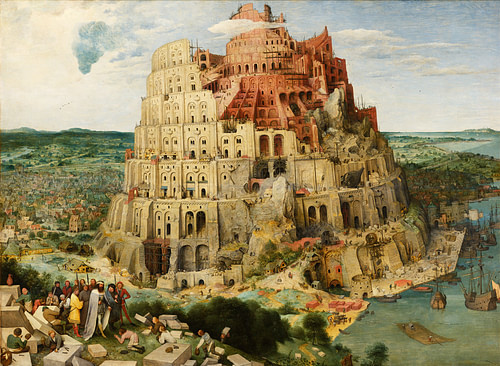
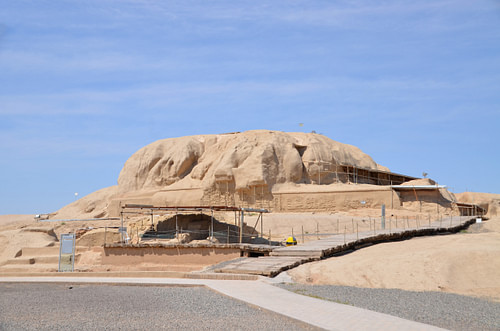
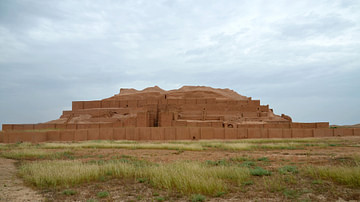



![Chogha Zanbil Ziggurat [East Side], Iran](https://www.worldhistory.org/img/c/p/360x202/10670.jpg?v=1702536009)




